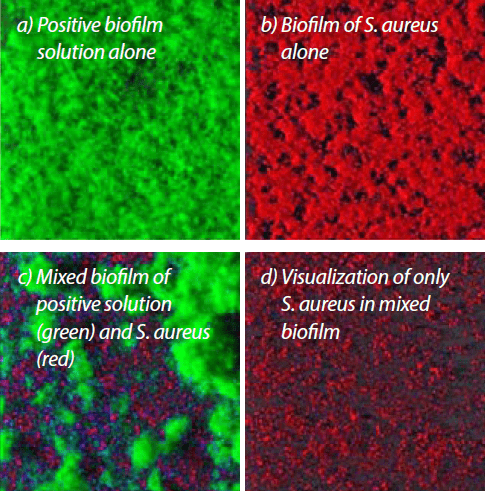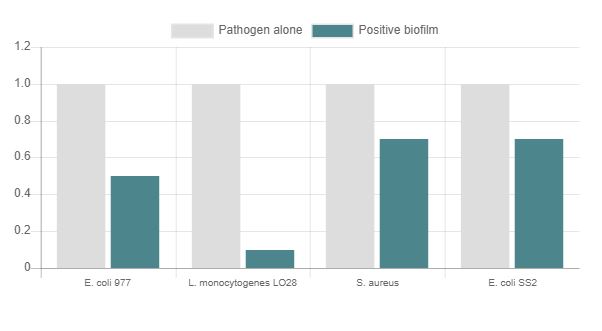Blog | Reading Time 2 minutes
In vitro results reinforce the positive biofilm concept for animal environment
Lallemand recently introduced the positive biofilm concept (Feed Update 41, November 2019), which represents a new tool in the farm biosecurity toolbox.
The idea is to apply beneficial bacteria that are able to form a positive biofilm along farm surfaces just after disinfection and prior to entry of new animals. Recent in vitro studies reinforce the positive biofilm concept, showing the interaction of a positive biofilm with undesired microorganisms on various matrixes.
Watching the battlefield
An external in vitro study was conducted by the INRAe Micalis Institute (Paris). It allowed scientists to visualize the interaction between a positive biofilm solution and different undesired microorganisms (Staphylococcus aureus HG003, Listeria monocytogenes LO28, Escherichia coli SS2, and Escherichia coli 977 in this case).
- Plates were inoculated either with the positive biofilm solution (shown in green) or the tested microorganism alone (shown in red).
- 24 hours later, the tested microorganisms were added on top of the positive biofilm.
Figure 1 shows one example of the positive and negative biofilms visualization. It appears that when a positive biofilm is applied first to the plate surface to develop (picture d), the negative bacteria has visibly less room to develop as compared to a sterile surface (picture b).

Figure 1. Representation of a positive biofilm interaction with S. aureus. (INRAe Micalis, internal report, 2019).
Quantitative results
To quantify these results, the researchers analyzed the microscopic images to calculate relative biofilms volumes (Figure 2).
This shows that — for the four microorganisms tested — the pre-treatment of the plate surfaces with a positive biofilm helps avoid colonization by the undesirable microorganisms.
It has previously been shown in commercial farm settings that a positive biofilm approach can help improve the animal’s microbial environment with a positive impact on animal health. As a result, production performance is improved. The present in vitro data show that the positive biofilm approach can really help avoid the re-colonization of undesirable bacteria commonly found in the farm environment.
Published Nov 3, 2020 | Updated Jun 7, 2023
Related articles
Need specific information?
Talk to an expert